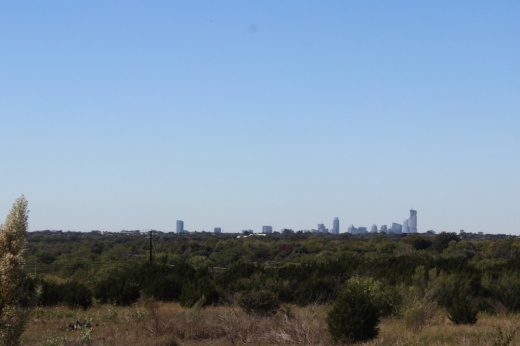Austin and Travis County leaders this summer committed to a joint project aimed at bringing new development, infrastructure improvements and economic activity to the city and county's historically overlooked northeastern region.
The big picture
Travis County commissioners and Austin City Council members each signed off on similar resolutions in late August laying out a collaborative planning effort centered on northeast Austin and Travis County.
The measures came from Commissioner Jeff Travillion, representing the county's northeastern Precinct 1, and Council Member Natasha Harper-Madison, who represents northeast Austin's District 1.
Situated across multiple jurisdictions within Austin's eastern crescent, the Northeast District is roughly bounded by Hwy. 290 to the north, SH 130 and US 183 to the east and west, and the Colorado River and FM 969 to the south.
The Northeast District is home to Austin's Walter E. Long and John Treviño Jr. metropolitan parks and the Travis County Exposition Center. Some planned future investments in the area are the city-backed mixed-use redevelopment in Colony Park along with the new commuter rail and bus lines included in a future extension of the Project Connect transit system.
The context
The Northeast District planning partnership is aimed at responding to the trend of historic disinvestments, inequities and systemic racism the area has experienced, Travillion and Harper-Madison said.
Some officials have been pushing for a renewed focus on the northeastern limits for a while, although progress to date has been limited. While City Council members voted years ago to move a long-range comprehensive plan for northeast Austin forward, that work was never fully funded and hasn't advanced since an initial scope of work was drafted in 2021.
“With great hesitation, I will admit that it hadn’t gone very far, unfortunately,” Harper-Madison told Community Impact on Aug. 31. “The truth of the matter is there’s a great deal of interest; we just haven’t made a lot of progress. But I think historically speaking, it’s not a surprise for anyone that northeast Austin, especially far northeast Austin, hasn’t had an opportunity.”
The renewed district planning project will also serve as a pilot concept for a Marshall Plan—inspired by the namesake U.S. assistance measure for European economic recovery after World War II—for all of eastern Travis County. Planning efforts in the northeast could end up inspiring similar future work in the southeast, according to the county.
The details
The joint government initiative is attached to financial investments from both sides. Austin officials in August approved a fiscal year 2023-24 budget with $1.1 million reserved for Northeast District planning, and county commissioners in September may set aside around $250,000 for that work in Travis County's next budget.
With the city and county resolutions passing in August, staff with both entities will now begin:
- Developing an interlocal agreement for the collaboration laying out their goals and funding details
- Laying out a work plan for the district project that includes a focus on affordable housing, economic redevelopment and infrastructure
- Expanding the planning effort to include other interested local governments and linking it to Travis County's Marshall Plan concept
- Creating an advisory committee made up of community members and organizations, and setting a community-led vision for the area
- Establishing internal city and county working groups for the project
Austin and Travis County leaders are expected to receive quarterly updates on the work as it proceeds.
For now, the city has selected consultants to assist with the Northeast District project going forward, and the firm is expected to be brought on by the fall, Austin Planning Director Lauren Middleton-Pratt said in a memo. Details about the consulting firm are not yet available.
April Geruso, a division manager in Austin's long-range planning division, told Community Impact that staff are now moving ahead with initial planning and outreach across Northeast Austin.
“There are some communities that have been heavily engaged and involved for years and years and years in planning, and there are some communities within this area that have not yet been engaged and involved," Geruso said. "We’ve been identifying various different groups that we want to make initial contact with to sort of see how we can get robust involvement from community members across that entire district area.”
Staffers involved in the Northeast District process are also coordinating with the city's equitable transit-oriented development, or eTOD, team as well as local transit entities given the many bus and future rail stations in the area.
The formal public visioning process for the Northeast District plan is expected to launch in November, Geruso said.
While the governments are contributing resources to the effort, officials also said it'll be key to involve residents, neighborhood associations and other local groups as plans take shape.
“This is about the community standing up and saying, ‘We want better, and we can do better,’” Harper-Madison said Aug. 29.
Quote of note
“When we sit together and work together and look at what happens in our community and look at our out-migration patterns and look at where families are suffering, that we can put our differences aside and work together and reason together is something that this community needs and has wanted for a long period of time,” Travillion said.
Darcy Sprague contributed to this report.





